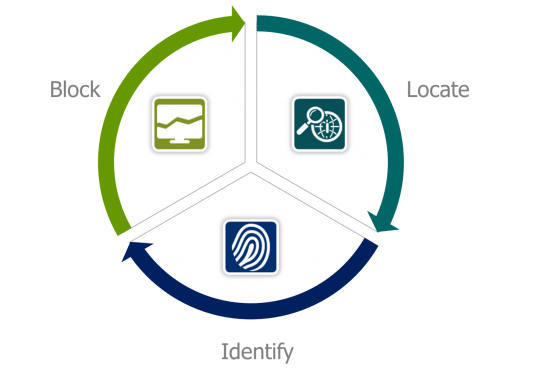































The media and entertainment industry is struggling to deal with piracy. While investment in content protection technology is growing, determined attackers always find a way to extract content. Once the content is out on file sharing networks, there is very little that can be done to block its redistribution.
But for live content the story is a little different. Live content has a unique property -it is very valuable for a limited period of time and its value diminishes very quickly afterwards. If you manage to protect your content during its live airing, then you secured most of its value. Additional factors that make live content piracy different are the fact that devices used to pirate the content are actively connected to the legitimate service, which means that some measures of control are still available to the authorized distributor of the content. And pirates are limited in the 'anti-anti-piracy' measures they can employ, because the content must go out to their unauthorized viewers with as little delay as possible.
 To protect live content you need a concerted effort to monitor illicit streaming sites and subscription-based networks to locate your content during its live airing, identify the devices on the legitimate service being used to source the content and quickly shut down those source devices. Tight integration and automation of these three steps enables the real-time response which is the key to achieving measurable results.
To protect live content you need a concerted effort to monitor illicit streaming sites and subscription-based networks to locate your content during its live airing, identify the devices on the legitimate service being used to source the content and quickly shut down those source devices. Tight integration and automation of these three steps enables the real-time response which is the key to achieving measurable results.
An effective monitoring system for locating illicit content requires a combination of expertise and technology. You need experts to collect intelligence from dark forums where pirates share knowledge and trade content, and to locate where pirated content is on offer. This intelligence can then be fed into a monitoring technology that can sift through a large number of illegal streams in real-time to find your content.
Once you've identified content that you suspect is being sourced from your service, you need to identify the devices responsible for leaking it. Forensic watermarking is the technology for the job, but not all watermarks are the same. The better known watermarking technologies in the market today are very robust against attack and maintain high picture quality (i.e. imperceptible), but they require many minutes of video in order to extract a unique identifier from the video stream. For live events, where detection time is of critical importance, this is not good enough. What is needed is a watermarking technology that can detect in seconds -not minutes -even if it means that it might not meet the highest standards for imperceptibility.
Like most security technologies, forensic watermarks are not a silver bullet. You should expect that a skilled and determined hackers will find a way to defeat any given watermarking technology. So in order to stay on top, you need a set of watermarking technologies and a system that can switch between technologies, so if one is compromised, you can quickly swap in another. Using an adaptive watermarking solution will ensure the long term effectiveness of your leak identification efforts.
When the identity of the device responsible for leaking your content is known, you need to take swift action to block it. Blocking can be done through the video security system, but like watermarking, not all video security systems are suited for the job. The security system needs to be able to effect a real-time (or near real-time) rights revocation action in order to block leaking devices. But most video security systems are not built with this job in mind and therefore not equipped with mechanisms for real-time revocation/blocking actions. This is especially true for systems protecting OTT content. So to close the loop on piracy, video service providers need a video security system that can effect real-time control over rogue devices.
Finally, integrating the pieces and enabling automation is not just a means to save cost, it is what enables the anti-piracy system to disrupt the unauthorized redistribution in real-time, and frustrate the consumers of illicit live content. Locating the content, identifying its source and blocking the leaking device needs to happen quickly and continuously. This can be done only through tight integration between the different technologies at play and automation of the process end-to-end.
Cisco's Streaming Piracy Prevention service has been proving out in the field the concepts outlined above and helping Cisco customers fight piracy. For more information you may read our blog on Streaming Piracy Prevention.
 Hot Tags :
Service Provider
video security
drm
piracy
multi-drm
watermarking
Hot Tags :
Service Provider
video security
drm
piracy
multi-drm
watermarking